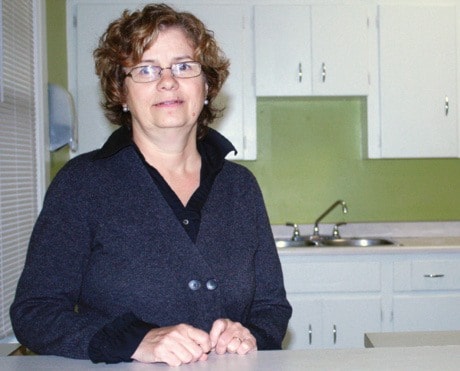After a months-long search for a new home, Beacon of Hope House is on the move.
“We’re seeing it as a new beginning,” said Keltie Manderville, co-ordinator of the Salvation Army’s residential recovery centre for teen boys struggling with a range of addictions.
Since 2007, the centre had been quietly operating inside a church rectory in Vic West. Like many community organizations, it got an eviction notice earlier this year when the Anglican Diocese of B.C. began selling several of its properties to pay off debt.
When St. Saviour’s church sold in February, the Salvation Army launched a search for a new six-bedroom home, properly zoned to allow for a recovery centre.
As the Oct. 31 eviction deadline approached, Manderville stopped accepting new clients, to avoid potentially disrupting their treatment. The last boy graduated from the 90-day program in mid-October.
With one week left on its lease with the Diocese, the organization announced the purchase of a new house that met all its criteria, near the Uptown shopping centre in Saanich. The exact location is not public.
“We’re waiting for a new sprinkler system, so that’s really a hold-up,” Manderville said. She hopes to open the doors for the next set of boys by the end of the month.
In total, Vancouver Island has 21 supportive recovery beds for teens.
Residential care is “when they need more intensive services than could be offered in community-based counselling … and they want to be in a more structured environment,” said Michelle Dartnall, manager of youth and family substance-use services for the Vancouver Island Health Authority.
In general, the demand for teen substance-use treatment is declining.
In the past year, 248 teenagers accessed some form of substance-use service through VIHA for the first time. That’s down from 328 in 2010-2011.
However, demand for residential care remains steady, according to the Boys & Girls Club of Greater Victoria.
“The kids that we deal with are the very vulnerable … so those numbers – they don’t decrease that much,” said Ellie James, manager of youth and family services for the organization.
The Boys & Girls Club operates a different model of residential recovery program for teens, placing youth in family homes. Its program has room for six teens at a time, of which 60 per cent are girls, James said.
“The families’ role is to provide a safe and supportive environment for the youth and we provide a worker to move (them) in a positive direction.”
James is currently searching for new families willing to accept teens for a three- to six-month term. “One of the biggest questions when they come in to our program: what’s the plan? If they’re not coming with you, they’re not going to make progress.”
According to Manderville, progress also comes with new opportunities.
When Hope House reopens, she hopes to launch music therapy for the boys.
“We’re just trying to get really creative,” she said. Already, the boys in care can participate in yoga, jiu-jitsu and writing workshops, on top of their mandatory daily counselling sessions.
It’s about exposing them to new interests, activities and skills, Manderville said.
She points to a recent success story about a boy from a northern Island community.
At first he didn’t want to participate in anything, she said. Slowly, he gave the activities a try and got really into writing.
“He wrote poems the whole time he was here … and we fostered that,” she said.
The gender divide
In recent years, the Salvation Army explored the idea of opening of a girls residential recovery home similar to Hope House, which only accepts boys.
But there isn’t adequate funding available to operate a girls’ home, said Kyla Ferns, spokesperson for the Salvation Army. Also, addictions aren’t as prevalent with teen girls as with boys, she added.
Traditionally, that has been the case, but the trend might be changing.
Male youth are “typically more likely to use substances and to use heavily,” according to a 2007 report by the Canadian Centre on Substance Abuse. “However, the gender gap may be narrowing, according to some recent surveys that show girls are as likely as boys to drink alcohol, binge drink, get drunk, smoke, and use an illicit drug,” continued the report.
Current statistics from the Vancouver Island Health Authority concur. In 2010-11, the number of teen girls accessing some form of substance-use service for the first time were equal to the number of boys. In 2011-12, teen girls outnumbered boys: 137 accessed services, compared to 111 boys.
rholmen@vicnews.com
By the numbers
Beacon of Hope House funding:
• Annual budget – $520,000
• VIHA contribution – $140,000
• Salvation Army donations – $380,000
